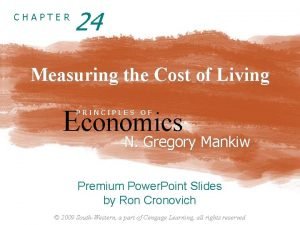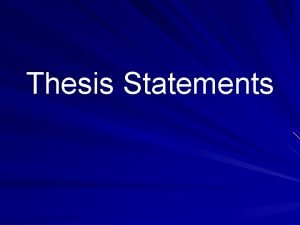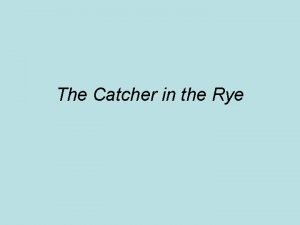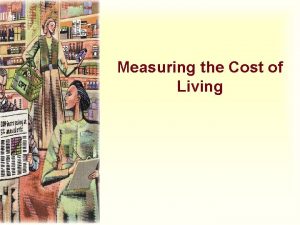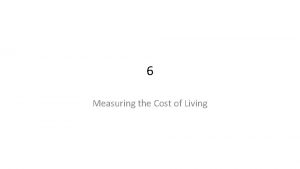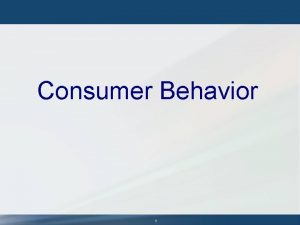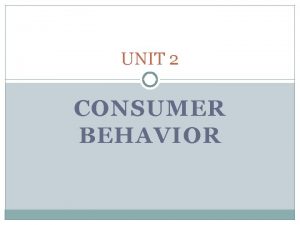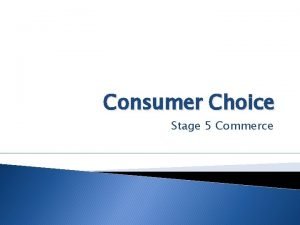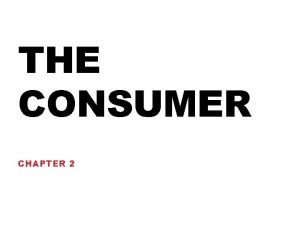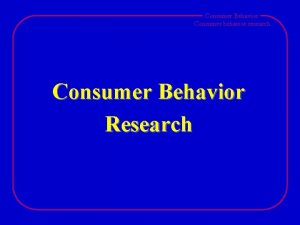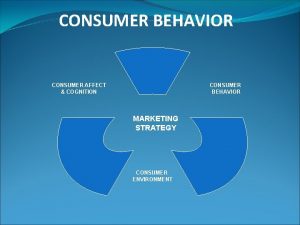Measuring the Cost of Living 1 The Consumer
















- Slides: 16

Measuring the Cost of Living 1

The Consumer Price Index • Consumer price index (CPI) – Measure of the overall level of prices – Measure of the overall cost of goods and services – Bought by a typical consumer – Bureau of Labor Statistics 2

Calculating CPI 1. Fix the basket – Which prices are most important to the typical consumer – Different weight 2. Find the prices – At each point in time 3. Compute the basket’s cost – Same basket of goods – Isolate the effects of price changes 3

Calculating CPI 4. Chose a base year and compute the CPI – Base year = benchmark • Price of basket of goods & services in current year • Divided by price of basket in base year • Times 100 5. Compute the inflation rate 4

Table 1 Calculating the Consumer Price Index and the Inflation Rate: An Example This table shows how to calculate the consumer price index and the inflation rate for a hypothetical economy in which consumers buy only hot dogs and hamburgers. 5

Table 1 Calculating the Consumer Price Index and the Inflation Rate: An Example This table shows how to calculate the consumer price index and the inflation rate for a hypothetical economy in which consumers buy only hot dogs and hamburgers. 6

The Consumer Price Index • Inflation rate – Percentage change in the price index • From the preceding period • Producer price index, PPI – Measure of the cost of a basket of goods and services bought by firms – Changes in PPI are often thought to be useful in predicting changes in CPI 7

Figure 1 The Typical Basket of Goods and Services This figure shows how the typical consumer divides spending among various categories of goods and services. The Bureau of Labor Statistics calls each percentage the “relative importance” of the category. 8

The Consumer Price Index • Problems in measuring the cost of living – Substitution bias • Prices do not change proportionately • Consumers substitute toward goods that have become relatively less expensive – Introduction of new goods • More variety of goods – Unmeasured quality change • Changes in quality 9

GDP deflator versus CPI • GDP deflator – Ratio of nominal GDP to real GDP – Reflects prices of all goods & services produced domestically • CPI – Reflects prices of goods & services bought by consumers 10

GDP deflator versus CPI • GDP deflator – Compares the price of currently produced goods and services • To the price of the same goods and services in the base year • CPI – Compares price of a fixed basket of goods and services • To the price of the basket in the base year 11

Figure 2 Two Measures of Inflation This figure shows the inflation rate—the percentage change in the level of prices— as measured by the GDP deflator and the consumer price index using annual data since 1965. Notice that the two measures of inflation generally move together. 12

Correcting Economic Variables • Dollar figures from different times • Indexation – Automatic correction by law or contract – Of a dollar amount – For the effects of inflation – COLA • Cost of living allowance 13

Real and Nominal Interest Rates • Nominal interest rate – Interest rate as usually reported – Without a correction for the effects of inflation • Real interest rate – Interest rate corrected for the effects of inflation = Nominal interest rate – Inflation rate 14

Interest rates in the U. S. Economy • Nominal interest rate – Always exceeds the real interest rate – U. S. economy has experienced rising consumer prices in every year • Inflation is variable – Real and nominal interest rates do not always move together • Periods of deflation – Real interest rate exceeds the nominal interest rate 15

Figure 3 Real and Nominal Interest Rates This figure shows nominal and real interest rates using annual data since 1965. The nominal interest rate is the rate on a 3 -month Treasury bill. The real interest rate is the nominal interest rate minus the inflation rate as measured by the consumer price index. Notice that nominal and real interest rates often do not move together. 16
 All about food chains
All about food chains Measuring the cost of living
Measuring the cost of living Primary consumer
Primary consumer Cengage
Cengage Consumer behaviour research process
Consumer behaviour research process Chapter 5 consumer markets and buyer behavior
Chapter 5 consumer markets and buyer behavior Changes in an individual's behavior arising from experience
Changes in an individual's behavior arising from experience Venn diagram of living things and nonliving things
Venn diagram of living things and nonliving things Yeast living or nonliving
Yeast living or nonliving Living non living dead
Living non living dead The smallest living unit of all living things is
The smallest living unit of all living things is Good thesis
Good thesis Catcher in the rye 1950s culture
Catcher in the rye 1950s culture The fourth foundation pay cash for college
The fourth foundation pay cash for college 1968 cost of living
1968 cost of living Cost accumulation and cost assignment
Cost accumulation and cost assignment Cost accumulation and cost assignment
Cost accumulation and cost assignment

